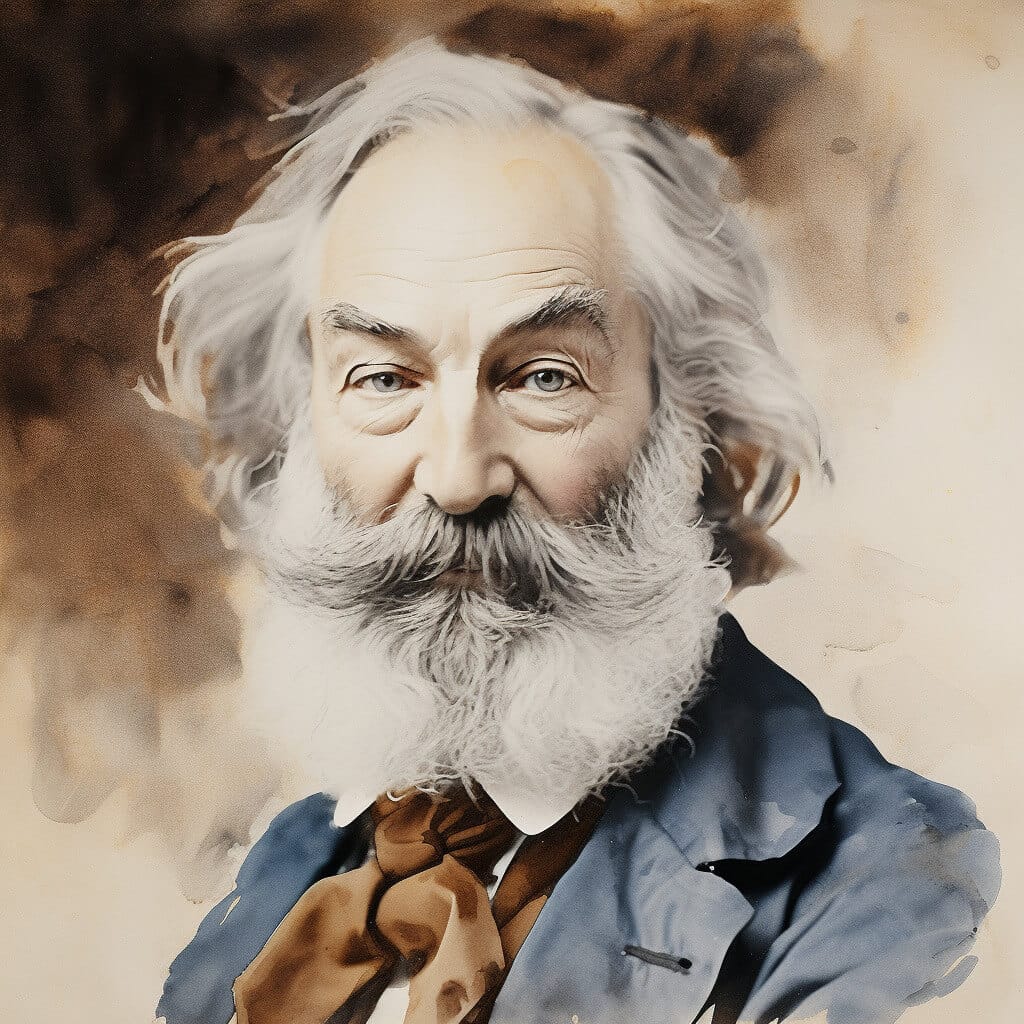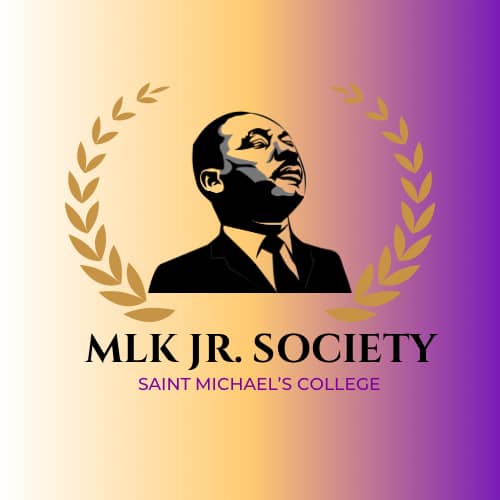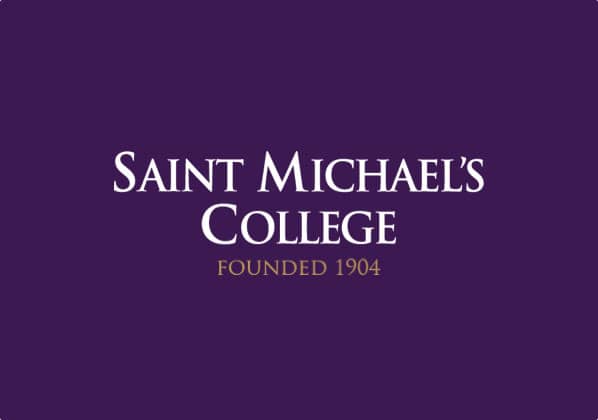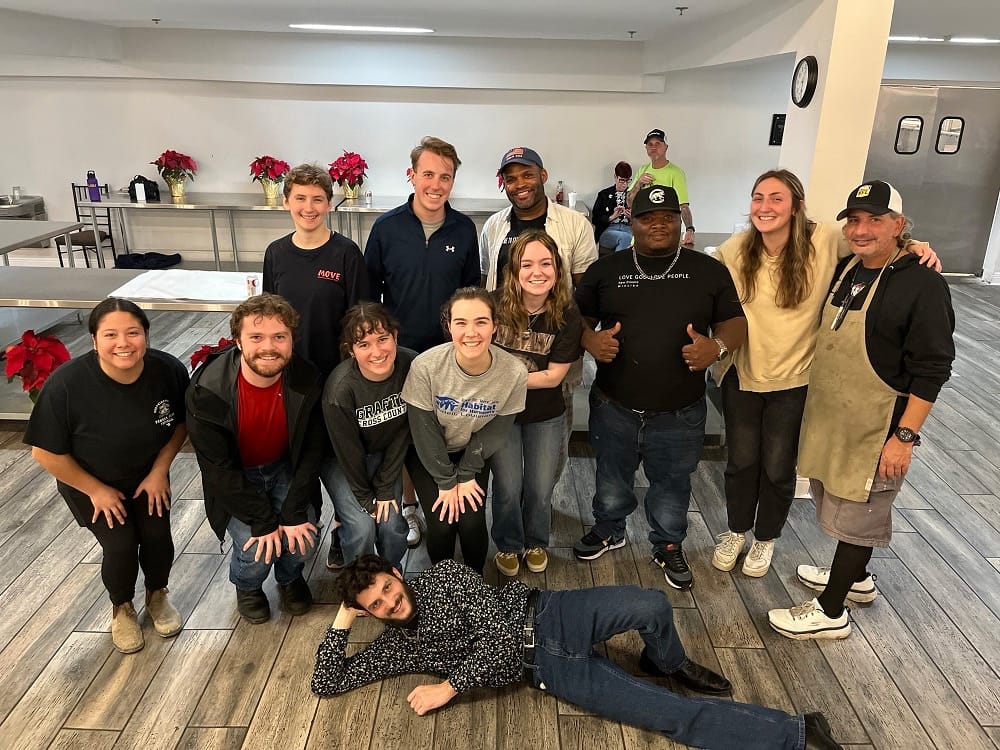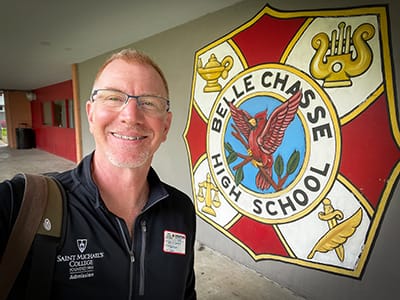Academic Symposium: Back live on campus, off to strong start
Early groups to share research include MJD seniors and history students with projects on Latin American nations; Friday, Saturday to be classroom sessions by discipline
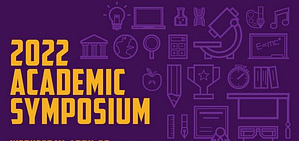 View a photo gallery of early Academic Symposium presentations>>
View a photo gallery of early Academic Symposium presentations>>
Students and their faculty mentors were excited to be back with live presentations for the annual Academic Symposium at Saint Michel’s College this week after a pandemic hiatus for the past two years that only allowed for scaled-back online presentations.
Sarah Nosek of the psychology faculty is lead organizer of this year’s Academic Symposium, an annual celebration of the work of Saint Michael’s College students. She said that this year’s presentations started on Wednesday, April 20 and will run through Saturday, April 23, as has been traditional in pre-pandemic years.
One difference this year, however, is that out of prudent COVID caution on campus, the normally very popular poster session piece of the Symposium, which typically happens midday on Saturday in the Dion Family Student Center, will not take place this year. In its place, a smaller number of student groups — from business administration & accounting, theater, French, physics and psychology — have prepared “asynchronous presentations,” meaning they can be viewed online at any time. However, psychology students on Saturday will be offering so-called “synchronous presentations” in real time online about their research and internship outcomes.
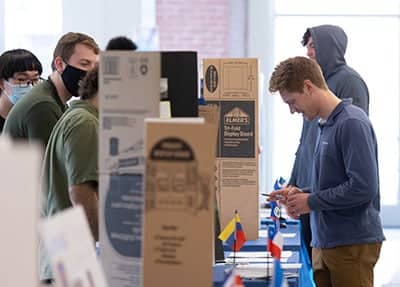
History students of Professor Kathryn Dungy present on Latin American nations Thursday. The professor gave each a flag of his or her country as a keepsake. (all photos by Patrick Bohan)
The Academic Symposium offers an idea of all that a Saint Michael’s student can accomplish. This year’s event, even minus the poster session, still has everything from Wednesday’s traditional opening presentations – films, web documentaries and books that are the year-long senior projects of media studies, journalism and digital arts students — to Thursday’s class exhibits in Dion on the Caribbean and Latin America from history students of Professor Kathryn Dungy. Today and Saturday, from morning through late evening in some cases, will be scores of oral presentations of major research projects by discipline throughout the academic buildings.
In a normal past year, the symposium has featured work from more than 300 hundred students showing off their final projects, semester-long research and Study Abroad experiences over the four days. In this year’s return to near-normalcy, close to 250 students will be spotlighting their significant achievements, as other students, faculty, staff and community members buzz around campus all week to take in all of the work and show appreciation.
Ruth Fabian Fine of the biology faculty, who has organized the Symposium several previous years and chairs the Symposium Committee this year while advising some science presentations, sees an added bonus to the event. “One thing that I have to say about the symposium is that it is not just an opportunity to celebrate what seniors have achieved but also an opportunity for first year students and sophomores to learn what type of research and projects are going on at the college that they can join,” she said.
Embracing a changing media world
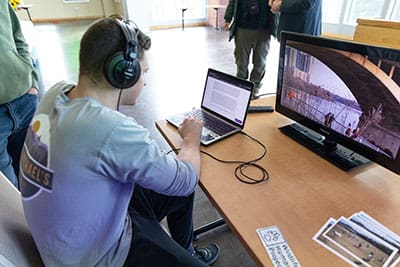
Web documentary displays were part of some of the MJD projects.
“It’s wonderful to be back” said Jon Hyde of the media studies, journalism and digital arts factory during Wednesday’s opening Symposium session in the Roy Room, featuring the work of students from his senior media research methods course who started their major projects at the start of fall semester and have been working on them since. “Each student had to go the extra mile because they were working under COVID pandemic conditions,” Hyde said. “They do all background research in the fall, ethnographic work, media surveys, pilot interviews and more,” and then start putting final products together second semester. These ranged from film projects to books and web documentaries. “Each is trying to create professionally produced media forms they can put in their portfolios and show employers what they are capable of now, and this leads directly to careers, which is amazing thing to see,” Hyde said.
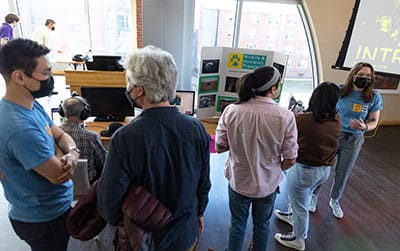
A group at Wednesday’s MJD session in the roy Room displays their work surrounding The Wildlife & Humanity Project.
Some big pandemic challenges for his students included abiding by mask mandates in going out for interviews, or adjusting to a new world centered on Zoom interviews — though that turned out to be a plus in many cases, now that interview subjects are more familiar and comfortable doing those.
An example was the group doing a project on new creative paradigms of education worldwide. Ellen McKenna ’22 and Megan Schneider ’22 did more than 20 interviews — via Zoom — to experts in Italy, Sweden, Germany and the UK, or some live in the Burlington area or in Maine where Schneider is from. They examined what unique schools are doing to create a stimulating environment for young children in light of pandemic adjustments.
Another group talked about their film documentary project. Addison Bourgelais ’22, Zhi Li ’22, and Jackson Stoever ’22 produced “The Wildlife & Humanity Project: A look into Animal/Rescue and Rehabilitation.” They told how one early interview led to them actually traveling to Texas as the invitation of a wildlife rehab site in that state, where they got amazing shots and interviews, paying for their own tickets to travel.
More word snapshots from among these MJD projects:
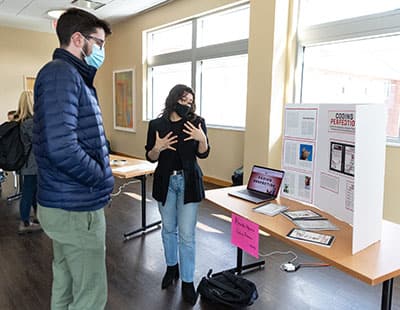
Miranda Maiorino ’22 tells an attendee to Wednesday’s MJD session about her research on genetic engineering.
Miranda Maiorino ’22 published a book about genetic engineering. It started just as a way to see how scientists were doing things to “customize “ cats or other pets, but it expanded to issues of human genetic engineering as well. “Will we be eventually be seeing designer children?” she asked.
Isabelle Davitt ’22 was inspired after reading an article on a band called Massive Attack in the UK that changed its tour practices once realizing the impact of tours on the environment. “I’m a huge fan of music festivals but we don’t always think of the impact on the environment,” she said of what became her book project. “I got to speak to interesting people.” Her experience is leading her toward a possible marketing career direction, she said.
Laura Hardin ’22 wanted to explore the dynamics of retirement among different generations while thinking about what it might mean for one just entering the workforce such as herself and her peers. She researched the relevant history from the Industrial Revolution to U.S. social security in the 1930s to Baby Boomer expectations and changing views among younger generations including her own.
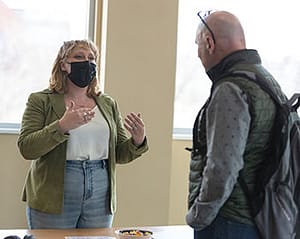
Laura Hardin ’22 talks about her book Wednesday.
She ended up completing her web documentary “Redefining Retirement: How a Generation is Shifting the Societal Notion for the Future.”
Professor Hyde articulated one of the distinguishing aspects of his students’ research projects that applies to many of those from the Symposium in other disciplines: “You’re putting out research from an academic standpoint that takes us someplace new, not repeating what has been said before but you’re leading us to some new forms of knowledge,” Hyde said. He said he personally is looking forward to the exciting possibilities next year when the College’s new Media Creation Lab will be in place to bring projects to the next level in professionalism.
Advancing international understanding
Professor Kathryn Dungy of the history faculty on Thursday mingled among students from two of her classes who were presenting their semester’s work in on the first floor of Dion Family Student Center along the wide hall outside the MakerSpace, pleased and impressed by what she was seeing.
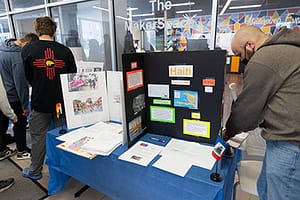
A presenter at Thursday afternoon’s session on Dion’s first floor by the MakerSpace.
“This is my Latin America survey class — a mixture of first-years through seniors,” she said of the first group to present starting at noon. “Each had chosen or been assigned a country in Latin America to follow and research the entire semester.
They did weekly country journals and eventually researched and prepared a project “that is something they want to share with the world about their country,” Dungy said. The professor leaves it up to students to choose a media for presentation, explaining, “I don’t get as interesting things as when I say ‘It’s yours’ and they run with it!” She pointed to some examples – Sterling Martin ’24 had a project on Ecuador focused on conservation goals in that country and particularly keying on protecting of the Galapagos Islands. Sam O’Brien ’25 produced a pamphlet about his country, Panama, and said he focused on an artificial lake there that interested him. “It used to be a canyon filled with rain water and a dam allows Panama to use the canal all year around” — also, he said, a Smithsonian institute on an island in the lake tracks important environmental data relating to climate change.
Lily Glover ’24 (Colombia) and Emma Anderson (Costa Rica), put modern technology to good use, offering QR Codes so those interacting with their presentations could go deeper by scanning with their phones while saving paper in a nod to environmental awareness.
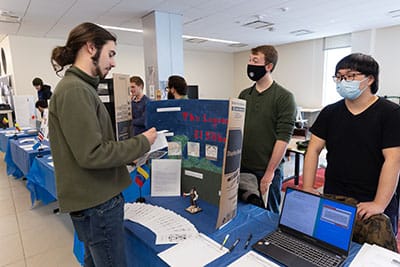
Braden Dwinell ’22, center, tells about his Venezuela research on a folklore figure (nearby photo).
Braden Dwinell ’22 distinguished his Venezuela presentation by creating a 3D figure in the MakerSpace of a famous figure out of Venezuelan folklore, El Silbon, or “the whistler,” a frightening character who collects the bones of drunkards and cheaters so they can’t get to heaven. “It’s a huge aspect of Venezuelan culture and they have festivals celebrating their folklore where he’s often a figurehead of this.”
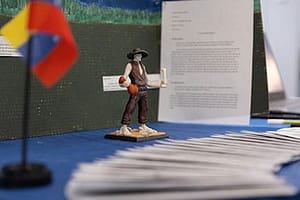
The figurine of “El Silbon” that Braden Dwinell ’22 created in the MakerSpace for his project.
Dungy was sorry that her student representing Mexico, Frank Loveland ’24, had come down with COVID and so could not be a presenter (as was also the case with the Puerto Rico presenter), “so I said, ‘I’ll try to be your voice for you.’” Professor Dungy related. She put his materials attractively on display, including even a figure from her personal collection. “Really in this project he’s humanizing people who have been villainized as migrants; he’s telling all the things that are happening to the migrant community, and saying, ‘really these are just people’ through his image sand words.”
Later Thursday in the same space from 1:45 p.m. to 3:30 p.m. were displays which in some aspects were even more advanced since they came from a higher-level Dungy class of mostly seniors — History 465 (“Haiti: Evolution of a Nation.”) What this class billed as its “Museum Installation Exhibits” surveyed a wide array of important aspects in Haitian life and culture. Among those topics were Haiti’s self -mage, Haiti and the environment, baseball and economy in modern Haiti, “Voodoo and Adaptability,” Haiti’s place in the wider world, its history, a look at life on “A street corner in Haiti, an overview of Haitian land, and Haitian Food Culture. Professor Dungy said she was deeply impressed by the displays that her students produced.
If the first two days were any indicator, Friday and Saturday’s Symposium offerings should be well worth attending. See a list of all the projects at the link below:

